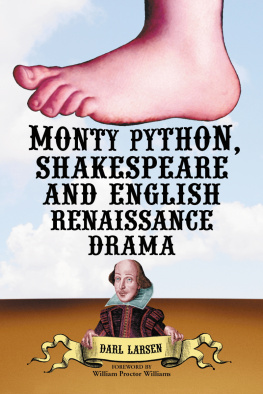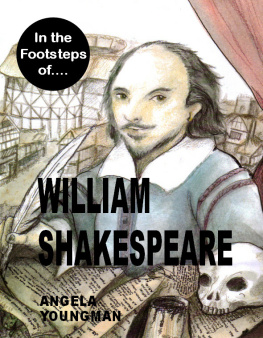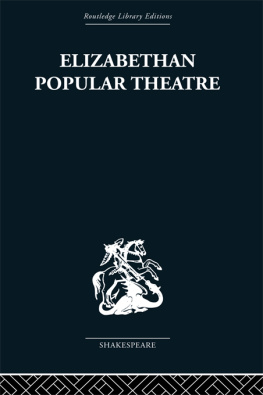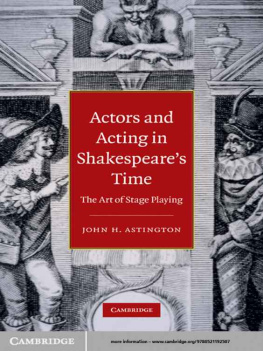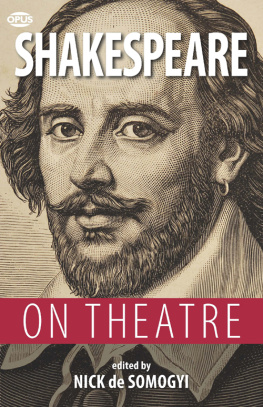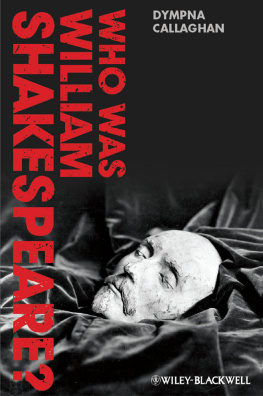
Table of Contents
List of Illustrations
- Chapter 02
- Chapter 03
- Chapter 06
Guide
Pages
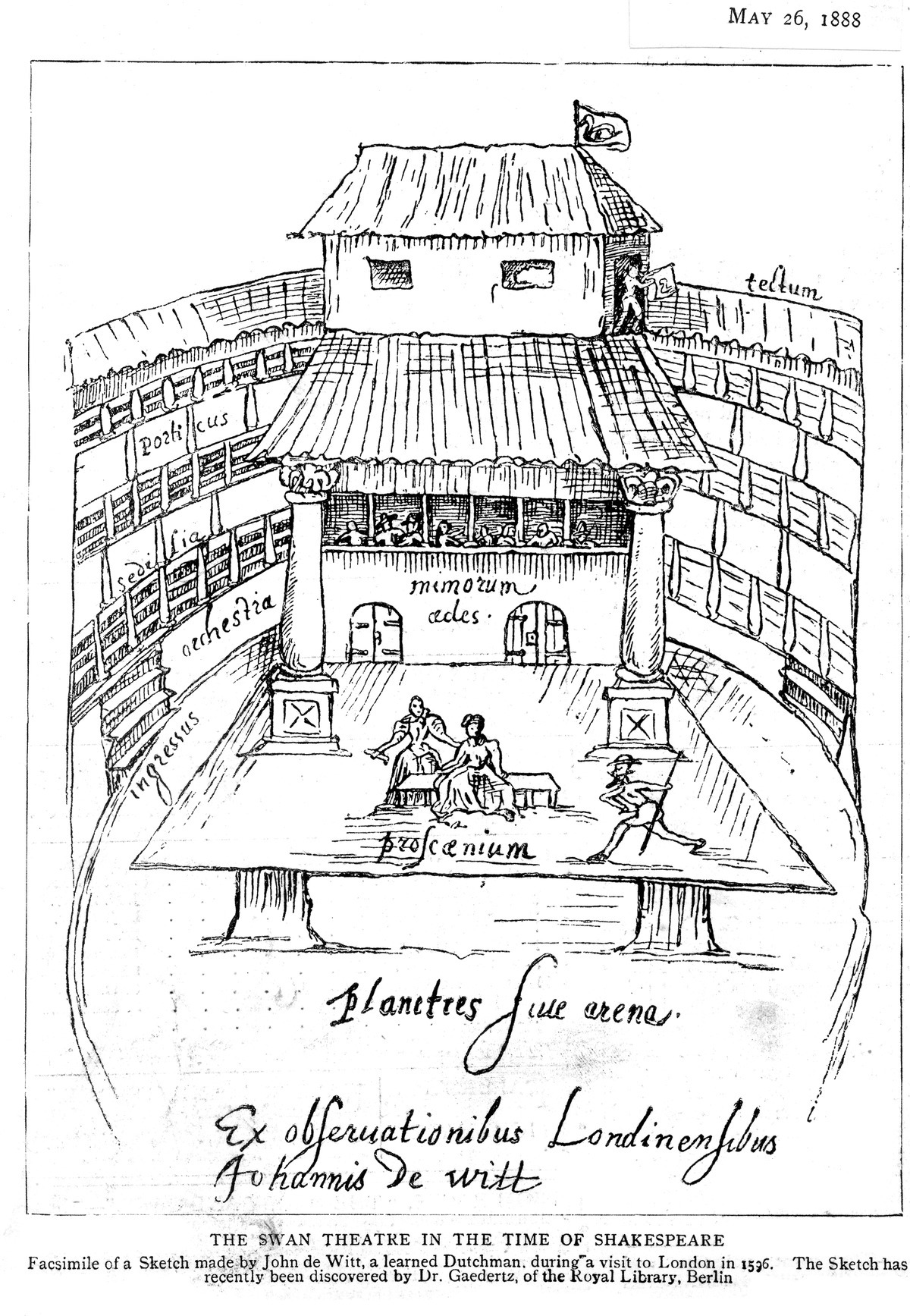
The De Witt drawing of the Swan playhouse.
Source: ART Vol. d57, no. 45c, Folger Shakespeare Library.
Shakespeares Theatre
A History
Richard Dutton
This edition first published 2018
2018 Richard Dutton
All rights reserved. No part of this publication may be reproduced, stored in a retrieval system, or transmitted, in any form or by any means, electronic, mechanical, photocopying, recording or otherwise, except as permitted by law. Advice on how to obtain permission to reuse material from this title is available at http://www.wiley.com/go/permissions.
The right of Richard Dutton to be identified as the author of this work has been asserted in accordance with law.
Registered Office
John Wiley & Sons, Inc., 111 River Street, Hoboken, NJ 07030, USA
John Wiley & Sons Ltd, The Atrium, Southern Gate, Chichester, West Sussex, PO19 8SQ, UK
Editorial Office
9600 Garsington Road, Oxford, OX4 2DQ, UK
For details of our global editorial offices, customer services, and more information about Wiley products visit us at www.wiley.com.
Wiley also publishes its books in a variety of electronic formats and by printondemand. Some content that appears in standard print versions of this book may not be available in other formats.
Limit of Liability/Disclaimer of Warranty
While the publisher and authors have used their best efforts in preparing this work, they make no representations or warranties with respect to the accuracy or completeness of the contents of this work and specifically disclaim all warranties, including without limitation any implied warranties of merchantability or fitness for a particular purpose. No warranty may be created or extended by sales representatives, written sales materials or promotional statements for this work. The fact that an organization, website, or product is referred to in this work as a citation and/or potential source of further information does not mean that the publisher and authors endorse the information or services the organization, website, or product may provide or recommendations it may make. This work is sold with the understanding that the publisher is not engaged in rendering professional services. The advice and strategies contained herein may not be suitable for your situation. You should consult with a specialist where appropriate. Further, readers should be aware that websites listed in this work may have changed or disappeared between when this work was written and when it is read. Neither the publisher nor authors shall be liable for any loss of profit or any other commercial damages, including but not limited to special, incidental, consequential, or other damages.
Library of Congress CataloginginPublication Data
Names: Dutton, Richard, 1948 author.
Title: Shakespeares theatre : a history / by Richard Dutton.
Description: Hoboken, NJ : Wiley, 2018. | Includes bibliographical references and index. |
Identifiers: LCCN 2017024307 (print) | LCCN 2017036417 (ebook) | ISBN 9781118939338 (pdf) | ISBN 9781118939321 (epub) | ISBN 9781405115131 (cloth)
Subjects: LCSH: Shakespeare, William, 15641616Dramatic production. | Shakespeare, William, 15641616Stage history. | TheatreEnglandHistory16th century. | TheatreEnglandHistory17th century. | English dramaEarly modern and Elizabethan, 15001600History and criticism. | English drama17th centuryHistory and criticism.
Classification: LCC PR3095 (ebook) | LCC PR3095 .D885 2018 (print) | DDC 822/.309dc23
LC record available at https://lccn.loc.gov/2017024307
Cover Design: Wiley
Cover Images: (Theatre Swan De Witt) Chronicle/Alamy Stock Photo;
(Background) ke77kz/Gettyimages
For Hollea, who likes books
List of Illustrations
| The De Witt drawing of the Swan playhouse. Source: ART Vol. d57, no. 45c, Folger Shakespeare Library. |
| Portrait of Edward Alleyn. Source: akgimages |
| Image of Richard Tarlton (or Tarleton). Source: British Library Board All Rights Reserved / Bridgeman Images |
| Interior of the Great Tudor Hall at Rufford Old Hall (showing the lower hall, with carved screen). Source: The National Trust Photolibrary / Alamy Stock photo |
| Interior of the Great Tudor Hall at Rufford Old Hall (showing the upper hall, with the high table in place and windowed alcove to the right). Source: The National Trust Photolibrary / Alamy Stock photo |
| Digital reproduction of a page in Philip Henslowes Diary. Source: Dulwich College, MS VII f9r, David Cooper. |
| A Map Showing the Theatres of Shakespeares Day. Source: First published in Shakespeares Playhouses, by John Quincy Adams (1917) |
| Image of Will Kemp and Companion on the titlepage of Kemps Nine Days Wonder. Source: PN2598. k6, 1839, Folger Shakespeare Library |
| Diagram of Seating Arrangements in the Great Chamber at Whitehall. Source: College of Arms, MS Vincent 151, pp. 1567 |
| Portrait of Henry Carey, 1st Lord Hunsdon. Source: Berkeley Castle |
| Section of Hollars Map Vista, London from the Bankside. Source: Map L85c, No. 29, Part 1, Folger Shakespeare Library |
| Portrait of Nathan Field. Source: Dulwich Picture Gallery, London, UK / Bridgeman Images |
| Portrait of Richard Burbage. Source: Dulwich Picture Gallery, London, UK / Bridgeman Archive |
| The Image of Robert Armin on the titlepage of The Two Maids of Moreclacke. Source: STC 773 Copy 1, Folger Shakespeare Library |
List of Boxes
| Swan Drawing |
| Philip Henslowe |
| James Burbage |
| Sir Thomas More |
| A Postscript to Stranges Men: Prescot |
| Masters of the Revels |
| A Day at the Theatre |
| Dramatic or BackStage Plots |
| Patronage and its Practices |
| Martin Slater and the Children of the Kings Revels |
| The Contracts of William Shakespeare and John Heminge |
| Augustine Phillips: Shakespeares FellowSharer |
| Women in the Theatres |
| The Falstaff Issue and the Use of the Blackfriars |
| The Jig |
| Contentions About The Globe: Size, Audience, Seating on the Stage |
| Court Masques |
Preface
Shakespeares Theatre is a narrative history of the playing spaces that Shakespeare wrote for not just the famous ones, like the Globe and the Blackfriars playhouses, but the country houses, inns, guild halls, Inns of Court and the royal palaces where he knew that his plays would also be performed. It is a history in that it follows a chronological arc, from about the time of his birth in 1564 until his retirement from the stage around 1613/14.
This is to underline the point that there was no single Elizabethan stage. The theatrical profession underwent revolutionary change during Shakespeares lifetime, developing from forms that were largely based in households of the aristocracy and gentry, academic institutions and royal palaces. Some troupes toured locally and then further afield, advertising the status of their patrons but also becoming increasingly professional. Theatrical venues specifically for them (and also for boy companies from some of the leading choir schools) were built in and around London from the 1570s. Around 1590 companies began to take up residence in these playhouses on a moreorless permanent basis, as London developed a population capable of sustaining daily playing, setting the conditions for the career of a man like Shakespeare.
Next page

